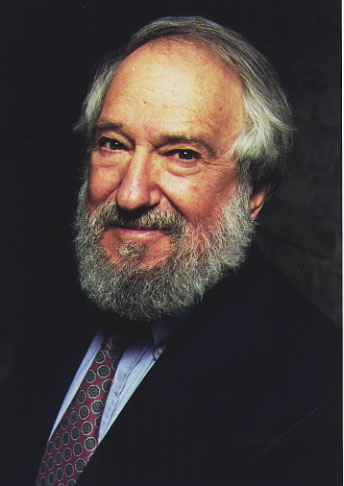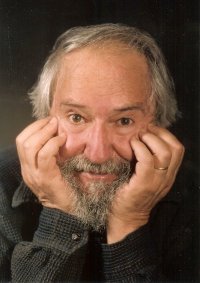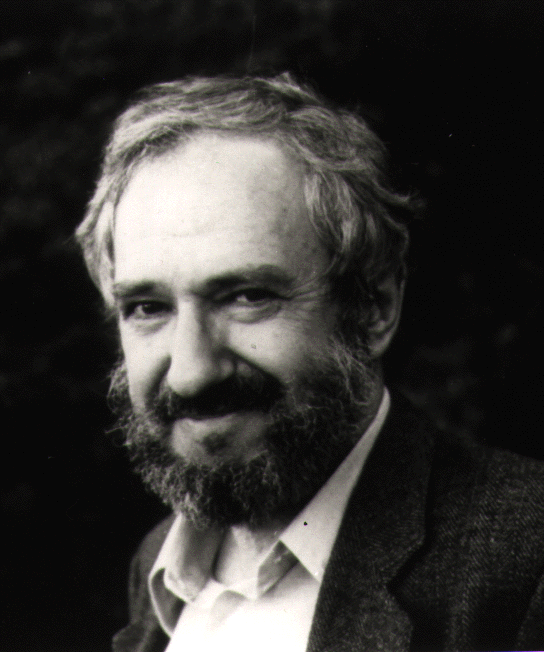<Back to Index>
- Computer Scientist Seymour Papert, 1928
PAGE SPONSOR



Seymour Papert (February 29, 1928, Pretoria - July 31, 2016, Blue Hill, Maine) was an MIT mathematician, computer scientist and educator. He was one of the pioneers of artificial intelligence, as well as an inventor of the Logo programming language.
Papert attended the University of the Witwatersrand, receiving a B.A. in 1949 and a PhD in mathematics in 1952. He then went on to receive another Ph.D., also in mathematics, at Cambridge University in 1959. He was a leading figure in the revolutionary socialist circle around Socialist Review while living in London in the 1950s.
Papert worked as a researcher in a variety of places, including St. John's College, Cambridge, the Henri Poincare Institute at the University of Paris, the University of Geneva and the National Physical Laboratory in London before becoming a research associate at MIT in 1963. He held this position until 1967, when he became professor of applied math and director of the MIT Artificial Intelligence Laboratory, until 1981; he also served as Cecil & Ida Green professor of education at MIT from 1974 - 1981.
Papert worked on learning theories, and is known for focusing on the impact of new technologies on learning in general and in schools as learning organizations in particular.
At MIT, Papert went on to create the Epistemology and Learning Research Group at the MIT Architecture Machine Group which later became the MIT Media Lab. Here, he was the developer of an original and highly influential theory on learning called constructionism, built upon the work of Jean Piaget in Constructivism learning theories. Papert worked with Jean Piaget at the University of Geneva from 1958 to 1963 and is widely considered the most brilliant and successful of Piaget's protégés; Piaget once said that "no one understands my ideas as well as Papert." Papert rethought how schools should work based on these theories of learning.
Papert used Piaget's work in his development of the Logo programming language whilst at MIT. He created Logo as a tool to improve the way that children think and solve the problems. A small robot called the "Logo Turtle" was developed and children used it to solve problems. A main purpose of the Logo Foundation research group is to strengthen the ability to learn knowledge. Papert insisted a simple language or program that children can learn — like Logo — can also have advanced functionality for expert users.
As part of his work with technology, Papert was a proponent of the Knowledge Machine. He was also one of the principals for the One Laptop Per Child initiative to manufacture and distribute The Children's Machine in developing nations.
Papert also collaborated with Lego on their Logo - programmable Lego Mindstorms robotics kits.
Papert's work was highly influential to other researchers in the fields of education and computer science. He influenced the work of Uri Wilensky in the design of NetLogo and collaborated with him on the study of knowledge restructurations, as well as the work of Andrea diSessa and the development of dynaturtles. In 1981, Papert along with several others in the Logo group at MIT, started Logo Computer Systems Inc., of which he was Board Chair for over 20 years. Working with LCSI, Papert designed a number of award winning programs, including LogoWriter and Lego / Logo (marketed as Lego Mindstorms). He also influenced the research of Idit Harel Caperton, coauthoring articles and the book Constructionism and chairing the advisory board of the company MaMaMedia. He also influenced Alan Kay and the Dynabook concept, and worked with Kay on various projects.
Papert won a Guggenheim fellowship in 1980, a Marconi International fellowship in 1981, the Software Publishers Association Lifetime Achievement Award in 1994, and the Smithsonian Award from Computerworld in 1997. Papert was called by Marvin Minsky "the greatest living mathematics educator."
Papert's third wife was Sherry Turkle, and together they wrote the influential paper "Epistemological Pluralism and the Revaluation of the Concrete."
Papert is married to Suzanne Massie Papert, who is a Russian scholar and author of Pavlovsk, Life of a Russian Palace and Land of the Firebird.
While attending the 17th ICMI Study conference in Hanoi, Papert (78) was struck by a motorcycle while crossing a road near his hotel on Tuesday December 5, 2006. He underwent brain surgery at the French Hospital of Hanoi on Wednesday December 6 to remove the blood clot that had formed. By the evening of Tuesday December 12, he was in stable but critical condition. Experts feared a deterioration if a MEDEVAC could not be flown as quickly as possible to either Paris or Boston, the only two hospital locations with the necessary expertise for the much needed specialist neuro - intensive care. There was at the time no mission compliant, long range Ambulance ICU Jet anywhere available including, except for one of four Swiss Air Ambulance Challenger Jets, based half way around the globe at the REGA HQ, Zurich International Airport in Switzerland.
On December 16, 2006 he was transferred by the highly specialized, ICU equipped, Swiss Air Ambulance Bombardier Challenger Jet, reportedly made possible and organized in a bold and daring action by the Swiss banker, Pascal Najadi, who was able to convince the REGA Flight Operations over the phone from Kuala Lumpur, Malaysia, (perhaps because he was an active patron of the REGA Swiss Air Ambulance) to swiftly approve the decision to fly without any payment guarantees and assemble at highest possible speed within 48 hours the necessary flight plan, specialized doctors, logistics and Vietnam airspace (Northern Sector) entry clearances for the Jet to take off from Zurich HQ, via Lahore to Hanoi, then to proceed with the critical patient in full ICU care of specialized Swiss Doctors and immediate family on board, via Petropavlovsk - Kamchatsky and Edmonton to Boston, Massachusetts, where the plane was met by U.S. Customs (thanks to the help of Senator John Kerry). Prof. Papert was transferred straight from the tarmac to the Mass General Hospital's neuro - intensive care unit, attended by Dr. William Curry, Dr. Lee Schwam, and Dr. Matsuza for immediate and critical specialist care.
The highly experienced Swiss flight crew of the Swiss Ambulance Challenger Jet had to pay special attention to ultra soft landings at fuel stops and special climb step procedures, not to harm the patient's critical condition during the long haul transfer flight. The doctors concluded that the patient was extremely stable during the flight thanks to the careful handling of the flight operation. The only other capable hospital in the world equipped for such critical specialized neuro - intensive care like the one needed in Prof. Papert's case, was the American Hospital in Paris, but Boston was chosen due to the proximity to his home in Maine.
On January 23, 2007 he was then transferred to a hospital in his home state of Maine. In March 2007, he suffered an attack of septicemia, which required treatment in the hospital until May. Another problem occurred in April, when he had to have a heart valve replaced due to the septicemia. By 2008, he had fully recovered from the septicemia and heart operation, and was able to think clearly, walk "almost unaided", and communicate. However, he still had "some complicated speech problems", and was undergoing extensive rehabilitation, although at home. Papert died at his home in Blue Hill, Maine, on 31 July 2016.